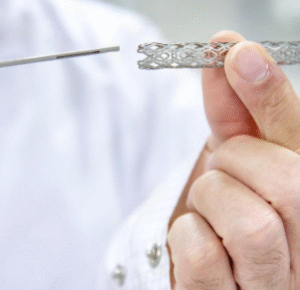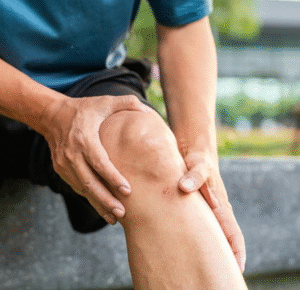1. Understanding Hidradenitis Suppurativa
Hidradenitis suppurativa (HS) is a chronic skin condition characterized by painful lumps under the skin, primarily in areas where skin rubs together. These lumps can break open, causing abscesses and scarring. Surgery is often considered when other treatments fail to provide relief.
2. The Role of Surgery in HS Treatment
Surgery for hidradenitis suppurativa is usually considered when the condition is severe or when other treatments have not been effective. Surgical interventions can help remove affected tissue, reduce pain, and prevent recurrence. Before and after pictures are crucial for understanding the impact of these procedures.
3. Types of HS Surgery
There are several types of surgeries available for HS. These include incision and drainage, deroofing, excision, and laser therapy. The choice of surgery depends on the severity of the condition, the location of the lesions, and the patient’s overall health.
4. Preparing for HS Surgery
Preparation for HS surgery involves several steps. Patients need to undergo a thorough medical evaluation, discuss the procedure with their surgeon, and follow pre-surgery instructions. This may include stopping certain medications, maintaining good hygiene, and fasting before surgery.
5. Incision and Drainage Procedure
Incision and drainage is a common procedure for HS. It involves making a small cut in the affected area to drain the pus and relieve pressure. This procedure provides temporary relief and is often used for acute flare-ups.
6. Deroofing Surgery Explained
Deroofing surgery involves removing the top layer of skin and tissue over tunnels formed by HS. This helps to open up the tunnels and promote healing. Before and after pictures of deroofing show a significant reduction in inflammation and improved skin appearance.
7. Wide Excision for Severe HS
Wide excision is a more extensive surgical option that involves removing all affected tissue in a specific area. This can be quite effective for severe HS but requires longer recovery time. Before and after images often show dramatic improvements in skin condition and a reduction in flare-ups.
8. Laser Surgery for HS
Laser surgery, such as carbon dioxide laser therapy, is used to remove affected tissue and reduce the recurrence of HS. This method is less invasive and can result in quicker recovery times. Before and after pictures highlight the reduced scarring and improved skin texture.
9. Post-Surgery Recovery Process
Recovery from HS surgery varies depending on the type of procedure performed. Patients can expect some pain, swelling, and drainage immediately after surgery. Following the surgeon’s post-operative care instructions is crucial for a smooth recovery and optimal results.
10. Importance of Before and After Pictures
Before and after pictures play a vital role in understanding the impact of HS surgery. They provide visual evidence of the improvements in skin condition and help set realistic expectations for patients considering surgery.
11. Managing Pain After Surgery
Pain management is a key component of post-surgery care for HS. Doctors may prescribe pain medications, and patients are advised to keep the surgical area clean and dry to prevent infection. Proper pain management ensures a more comfortable recovery process.
12. Preventing Infection After HS Surgery
Preventing infection is critical after HS surgery. Patients should follow their surgeon’s instructions on wound care, including regular cleaning, dressing changes, and monitoring for signs of infection. Effective infection control promotes faster healing and reduces complications.
13. Scarring and Cosmetic Outcomes
Scarring is a common concern for HS patients undergoing surgery. While some scarring is inevitable, the extent varies depending on the type of surgery and the individual’s healing process. Before and after pictures can help patients understand the potential cosmetic outcomes.
14. Long-Term Benefits of HS Surgery
The long-term benefits of HS surgery include reduced pain, fewer flare-ups, and improved quality of life. Surgical intervention can also lead to better mobility and less emotional distress caused by the condition.
15. Psychological Impact of HS and Surgery
HS can have a significant psychological impact on patients, causing stress, anxiety, and depression. Surgery can help alleviate these feelings by improving physical symptoms and boosting self-esteem. Before and after pictures often reflect the positive emotional changes experienced by patients.
16. Realistic Expectations from Surgery
It is important for patients to have realistic expectations from HS surgery. While surgery can provide significant relief, it may not completely cure the condition. Before and after pictures help patients understand the potential outcomes and set realistic goals.
17. Success Stories of HS Surgery
Success stories of HS surgery can be inspiring for those considering the procedure. Many patients report substantial improvements in their symptoms and quality of life. Sharing these stories, along with before and after pictures, can offer hope and encouragement.
18. Combining Surgery with Other Treatments
For optimal results, surgery is often combined with other treatments such as antibiotics, anti-inflammatory medications, and lifestyle changes. A comprehensive treatment plan can enhance the effectiveness of surgery and prevent future flare-ups.
19. Choosing the Right Surgeon
Choosing the right surgeon is crucial for a successful HS surgery. Patients should look for a board-certified surgeon with experience in treating HS. Reviewing before and after pictures of previous patients can help in making an informed decision.
20. Cost and Insurance Coverage
The cost of HS surgery can vary widely depending on the type of procedure and the healthcare provider. Patients should check with their insurance company to determine coverage and out-of-pocket expenses. Some procedures may be covered if deemed medically necessary.
21. Patient Testimonials
Patient testimonials provide valuable insights into the surgery experience. Hearing from others who have undergone HS surgery, along with viewing their before and after pictures, can help prospective patients feel more confident and prepared.
22. Advancements in HS Surgery
Advancements in HS surgery techniques and technology are continually improving patient outcomes. New methods such as minimally invasive procedures and advanced laser treatments offer more options with potentially better results.
23. Support Groups and Resources
Support groups and online communities can offer emotional support and practical advice for those undergoing HS surgery. Connecting with others who share similar experiences, and viewing before and after pictures, can be reassuring and informative.
24. Preparing for Life After Surgery
Life after HS surgery involves ongoing care and monitoring to maintain the results. Patients should follow their healthcare provider’s recommendations for skin care, lifestyle changes, and follow-up appointments to ensure long-term success.
25. Conclusion
Hidradenitis suppurativa surgery can significantly improve the quality of life for those suffering from this chronic condition. Understanding the types of surgery, preparation, recovery, and realistic expectations, along with reviewing before and after pictures, can help patients make informed decisions and achieve the best possible outcomes.




